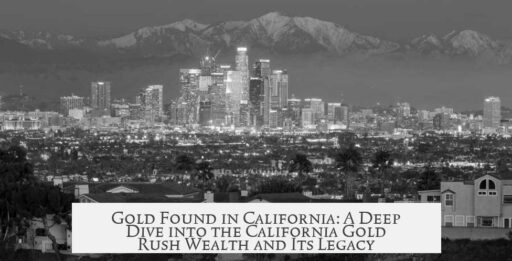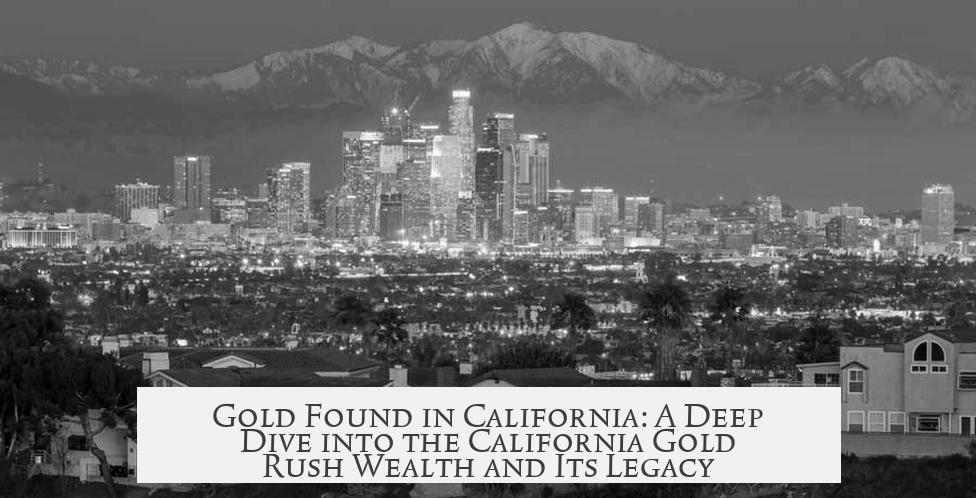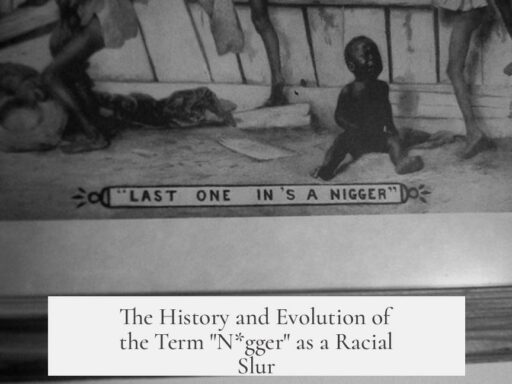During the California Gold Rush, over one million pounds of gold were extracted between 1848 and 1860. This produced roughly $300 million at the historical price of $16 per ounce. The gold came from all types of mining, including placer mining by small groups and later hydraulic and underground mining efforts.
The wealth from this vast amount of gold was broadly dispersed. Thousands of miners, often operating in small groups, shared the riches. Although the distribution was uneven, many miners gained some level of financial benefit. About 300,000 “49ers” arrived during the peak years of the rush, fueling this distribution.
Most miners did not become very wealthy. Few reached millionaire status. Many earned moderate sums—enough to secure a better life or purchase land back home—but vast fortunes were rare. The economic outcome favored some but left most miners with modest gains.
For perspective, compare the California Gold Rush to the Great Comstock Lode in Nevada, discovered in 1859. The Comstock produced around $350 million in gold and silver over twenty years, with roughly 500,000 pounds of gold and 5 million pounds of silver extracted. Though smaller in gold quantity, the Comstock had high silver output and represented a concentrated mining effort along a narrow four-mile line, unlike California’s widespread fields.
Considering today’s values, the California Gold Rush’s gold alone would be worth tens of billions of dollars. With gold prices near $1,250 per ounce, the historical haul translates into immense present-day wealth.
- Total gold produced: Over one million pounds (1848-1860)
- Historic value: About $300 million at $16/oz
- Wealth distribution: Broad but uneven among hundreds of thousands of miners
- Economic impact: Few wealthy, many modestly successful
- Comparison: Comstock Lode produced $350 million including silver
- Present value: Tens of billions of dollars
How Much Gold Was Actually Found in California During the Gold Rush?
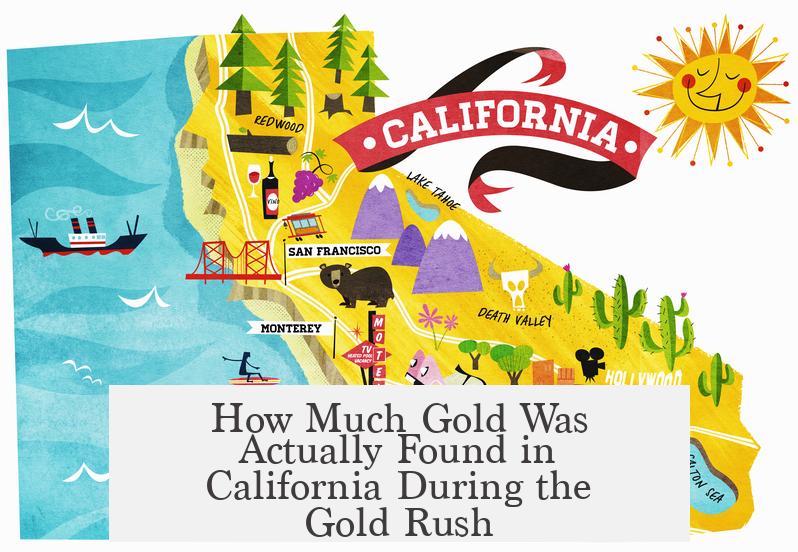
In a nutshell, California’s Gold Rush produced over 1 million pounds of gold worth around $300 million at the time—translating to tens of billions of dollars in today’s market. Sounds like a jackpot, right? But let’s dig deeper than just the headline figure.
The California Gold Rush, starting in 1848, isn’t just about striking it rich overnight. It’s a story of thousands of hopeful miners, heaps of dirt turned over, and a massive influx of gold that changed history. So how much gold did they actually pull from that golden state? Let’s break it down.
1 Million Pounds of Gold: The Big Picture
Between 1848 and 1860, Californians extracted roughly 1 million pounds of gold. At the time, gold sold for about $16 per ounce, which means the total value was approximately $300 million. To picture this, imagine millions of tiny glimmers gathered from riverbeds, hills, and underground lodes.
This gold came from a variety of mining techniques: initial placer mining by ’49ers panning for nuggets in the riverbeds, more organized hard rock mining, and hydraulic mining later on. Each method had its pros and cons, but together they accounted for this vast haul.
How Was the Wealth Distributed? Spoiler: Not Like a Lottery Win

Contrary to the common daydream of striking it rich and retiring at 30, the riches were far from evenly spread. Most miners worked in small groups. Around 300,000 ’49ers arrived during the peak years, and they shared this bounty—but the distribution was very uneven.
Many miners barely earned enough to get by, while a few pulled in moderate wealth, often enough to buy a farm back home. Only a rare, lucky few walked away with true fortunes. The rest? Well, let’s just say they found experience—and perhaps a bit of mud in their boots.
So, Did Many Miners Become Millionaires?
Not really. While the gold rush sparked dreams of lavish wealth, actual millionaire miners were few and far between. Most little ventures yielded modest gains. That low five-figure sum—considered decent success back then—was the realistic target for many.
The vast majority didn’t become millionaires or even close. Many miners simply returned to their previous lives with stories to tell, and sometimes with a few extra dollars to improve their situation.
How Does California Compare to Other Gold Rushes?
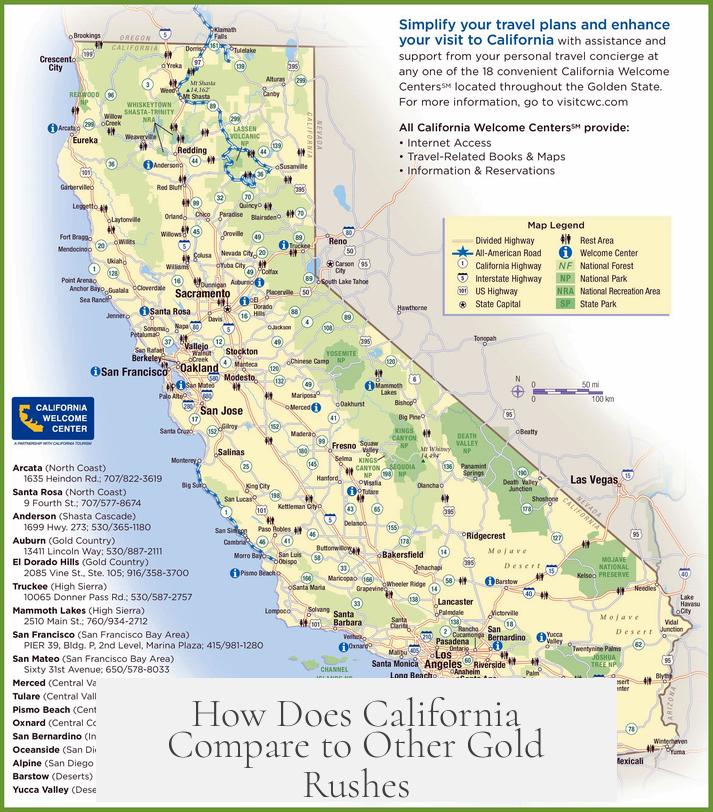
It’s tempting to think California’s gold rush was the biggest show in town—and it was for its time. But let’s compare it to the Comstock Lode in Nevada, discovered in 1859.
Over about 20 years, the Comstock Lode produced nearly $350 million in gold and silver, slightly more than California’s gold rush in terms of total value. It yielded roughly 500,000 pounds of gold and an astonishing 5 million pounds of silver. Unlike the spread-out California fields, Comstock was a more concentrated area, about a four-mile stretch packed with mines.
This comparison shows California’s rush was huge, but so was the American appetite for mineral wealth. Multiple discoveries shaped the West but in slightly different ways: California’s gold was more widespread and accessible to small miners, whereas Comstock favored larger operations and was enriched with silver too.
What Would This Mean Today?
Let’s fast forward to now: Imagine that 1 million pounds of California gold with gold prices hovering around $1,250 per ounce today. The value skyrockets into tens of billions of dollars. Yes, that’s billions with a ‘b’. If those miners could’ve had a crystal ball, the present value of their finds would have been mind-boggling.
This modern perspective reveals just how significant the gold rush was—not just for frantic prospecting and dreams, but for building wealth that shaped entire economies and migrations.
What Can We Learn From This Golden Story?
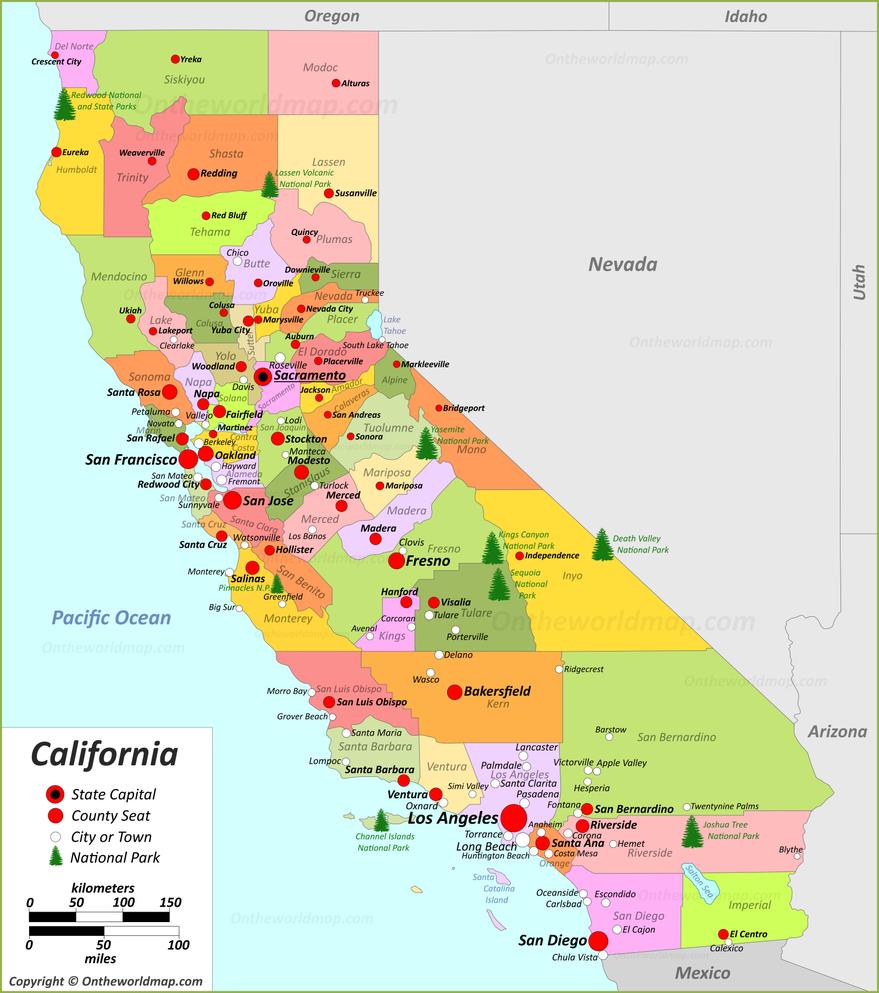
- Gold rushes are about more than gold: They reveal the grit and persistence of thousands who braved hardship for a chance at riches.
- Wealth distribution wasn’t equal: While some struck moderate gold, most worked hard for modest returns.
- Mining methods matter: Different techniques revealed various layers of wealth, from surface nuggets to deep underground veins.
- Contextual comparisons enrich understanding: The Comstock Lode offers an interesting contrast with its combined gold and silver bounty.
- The present value angle: Putting historical gold into modern dollars shows the true scale of these early mining endeavors.
So, could you have been one of the lucky ’49ers? Maybe. But remember, the real gold might just have been the stories, pioneering spirit, and the wild ride that was the California Gold Rush.
